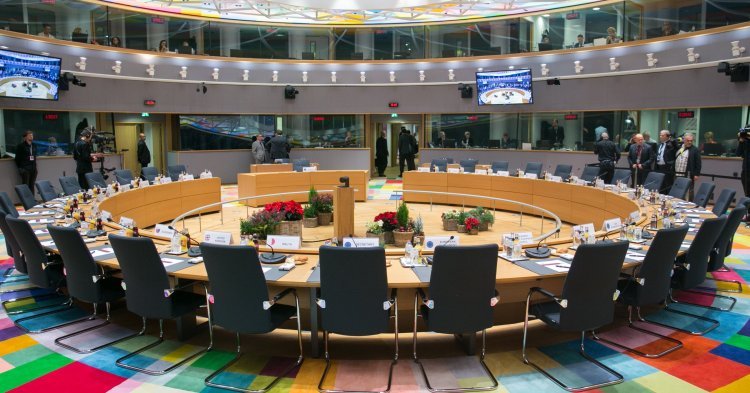There is no legislative body in the world which brings together as many member states as the Council of the EU does. European laws are adopted – on the basis of proposals from the Commission – by the European Parliament and the Council, the EU’s legislative bodies. It is there where the member states’ ministers, acting on behalf of their governments, meet. Parliament’s decision-making is similar to that of the national parliaments and is therefore easy to understand. The Council of the EU (informally also known as the “Council of Ministers”), on the other hand, often appears to be a black box: ministers meet in Brussels, agree – or disagree – and fly back to their capitals.
An EU-wide “Bundesrat”?
The narrative which highlights the Council’s uniqueness can be rebutted by comparing it to the German Bundesrat (Federal Council), the country’s upper chamber. There, too, individual states (the German Bundesländer) are represented and participate in legislative decision-making. The similarity of both “councils” is no coincidence: rather, it showcases Germany’s influence in the drafting of the EU treaties.
However, two crucial differences exist. On the one hand, there are no truly European parties within the Council - this only exists in the Parliament, within which national parties cooperate. In the Council, therefore, it is Member States’ national interests which dominate.In the German Bundesrat, on the other hand, party interests play a decisive role: conservative (CDU/CSU) and social democratic (SPD) minister presidents often coordinate their actions, agreeing on common party lines and approaches.
The second, more striking difference reveals itself in the voting process. In both bodies, there are special majority rules. In the Bundesrat, a majority of states must vote in favour. Votes, however, are weighted, to avoid small federal states being overruled by heavyweights such as North-Rhine-Westphalia or Bavaria.
In the ordinary legislative procedure, the Council of the EU requires a so-called ’qualified’ majority, namely 55 per cent of the states, which must represent at least 65 per cent of the Union’s total population. In addition, a so-called “blocking minority” can be formed by 45 percent of the states, or at least four Member States representing more than 35 percent of the population. This rule aims to prevent states with large populations from blocking European laws almost single-handedly.
In practice, however, the difference is noticeable: while decisions in the Bundesrat are regularly taken by a majority, the Council of the EU rarely decides by majority, but mostly by consensus - meaning no national government explicitly opposes a decision. In recent years, political science has sought to explain this phenomenon. The overall picture is clear:
Diplomatic groundwork
The first step in understanding this phenomenon is a simple realization: hardly any decisions are taken at the actual meetings ministers hold in Brussels. All EU member states have a permanent representation to the EU - with embassy status - located in Brussels. National diplomats assigned there are tasked with negotiating European legislation in lieu of their capitals. As “chief negotiators” - or “sherpas”, as they are often called -, they carry out the groundwork for the ministerial meetings.
The meetings’ agendas differentiate two types of decisions: A-items and B-items. The A-points are formally called and adopted en bloc at the beginning of the session: they have already been negotiated in advance, by consensus by the “sherpas”. Only the B-points are substantially discussed by the ministers. However, even many B-points seem to be passed by consensus: an explicit roll-call with dissenting votes is the exception. The following graph, which will become more detailed as the article proceeds, shows how the actual decisions are roughly distributed. The bar of “qualified majority” appears quite long here, for a reason which will become apparent at a later point.

In order to complete the tier model, we must look at how the A-points are discussed before the ministerial meetings. The Council’s most well-known body is the Committee of Permanent Representatives (COREPER, following its French spelling). Strictly speaking, these are the two committees (COREPER I and II) in which the Permanent Representatives of the Member States (i.e. the EU “ambassadors” of the countries) or their deputies meet. Each policy subject is dealt with in a Council working group, which is permanently assigned to one of the COREPERs and carries out the preparatory work for the COREPER meetings.

The majority rules encourage Member States to form coalitions during the negotiations, by finding other governments with similar negotiating positions. The goal is to form either a qualified majority or a blocking minority: if the latter manifests itself, no decision can be taken without the consent of the group of countries forming the blocking minority. An important moderating factor is the government presiding over all meetings as the Council Presidency: its good knowledge of the different coalitions and majority relations allows it to play a mediating role in contentious decisions. At the time of writing, in August 2020, this role is held by Germany.
In 2003, just over two-fifths of the actual decisions were taken in the Council working groups, one fifth in the committees, and about one third by the ministers themselves. Even with controversial legislative proposals, however, a number of conflicts are resolved by the sherpas even before the ministers are involved. Said ministers can refer drafts back to the COREPER and the working groups. The final decision may later be taken as an A-item.
B-points: high-level ministerial negotiations
The negotiation of A-points in advance explains why there is a consensus here. However, it does not explain why decisions are usually taken by consensus on the B-points as well. Typically, the Presiding Minister notes that there appears to be a consensus or a qualified majority. If no member state objects, no roll call vote is necessary to adopt an item.
In the Council, a “norm of silence” has developed over time, in case that a qualified majority has been achieved in negotiations: ministers then waive a vote against on B-points. Besides, the Council deals with a great number of drafts, though roll call voting is time-consuming and reduces productivity. Moreover, national diplomats are already thinking about the next negotiations and want to avoid a negative impression – especially if they represent relatively new member states. It also occurs that states support each other on various bills (i.e. “vote trading”): one state votes for a decision that another state supports, with the latter agreeing to return the favor.
Domestic expectations play a role as well. Representatives of some member states want to avoid damaging their national pride by admitting to have lost a negotiation. The interest and opinion of the national public on the specific issue, the structure of the economic sectors concerned, the strength of lobby groups and the ideological orientation of the ministers are further factors. It may occur that, after a Council meeting, individual states say that they actually reject a law adopted by consensus. This phenomenon can be described as a “false” consensus.
Open conflicts
Roll call votes in which states vote against a piece of legislation at a meeting of ministers are an exceptional phenomenon in the Council. The most prominent example may well be the vote on the distribution of refugees in autumn 2015. Luxembourg’s Foreign and European Affairs Minister Jean Asselborn called for a vote at the Council meeting on 22 September – and obtained a qualified majority despite fierce opposition from several member states.
Hungary, the Czech Republic, Romania, and Slovakia – motivated by domestic politics – voted against the distribution. Asselborn’s “success” has done little good: the states that voted against the distribution refused to implement it for years. The European Court of Justice has recently ruled this refusal to violating European law. Given that this judicial ruling came five years after the member states’ first refusal, gives us only small comfort.

This insight into the mechanisms of the Council of the EU has shown that decisions are not always as consensual as they seem to be to the outside world. Often, for various reasons, Member States choose to support decisions in the Council of the EU with which they do not actually agree. It requires serious reasons to show public dissent. Finally, it became clear that the entire legislative apparatus would be unthinkable without the tireless preparatory work of the national diplomats.
Nevertheless, the Council of the EU is not omnipotent: unlike the European Commission, for example, it the right to initiate legislation. The Council must also take account of the voice of the European Parliament in the ordinary legislative procedure. Even the Council’s complicated machine is only one piece, albeit indispensable, of many in the political clockwork of the EU.


Follow the comments: |
|
